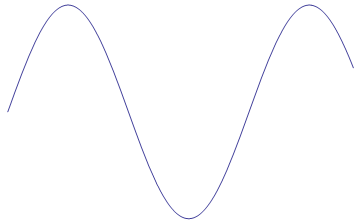Electromagnetic Radiation: Difference between revisions
No edit summary |
No edit summary |
||
| Line 59: | Line 59: | ||
Link: https://www.youtube.com/watch?v=hndPPTKjfPU | Link: https://www.youtube.com/watch?v=hndPPTKjfPU | ||
==References== | |||
https://www.youtube.com/watch?v=hndPPTKjfPU | |||
Revision as of 14:40, 18 April 2016
Claimed by Carlos Fernandez to edit (Spring 2016)
Electromagnetic Radiation
The four Maxwell's Equations provide a complete description of possible spatial patterns of electric and magnetic field in space.
The Main Idea
If a charge is moved sinusoidally it will emit continuous radiation.
A Mathematical Model
The position of the particle is defined by a sine wave:
Where w is the angular frequency.
Amplitude
The Amplitude of the sinusoidal Wave is the height of the peak in the wave measured from the zero line.
Period
The period of the wave is the time between crests.
T = 2pi/w-----(units of seconds)
Frequency
f = 1/T f = w/2pi----(Units Hertz)
Wavelength
The distance between crests in meters. Wavelength is equal to the speed of light times frequency.
ENERGY FLUX
Is defined by the following equation:
S = (1/u0)*(E x B) in W/m^2
where B = E/c
where c = speed of light
History
Electromagnetic radiation of wavelengths in the early 19th century. The discovery of infrared radiation is ascribed to astronomer William Herschel, who published his results in 1800 before the Royal Society of London. Herschel used a glass Triangular prism (optics)|prism to refract light from the Sun and detected invisible rays that caused heating beyond the red part of the spectrum, through an increase in the temperature recorded with a thermometer. These "calorific rays" were later termed infrared.
Video Explanation
Link: https://www.youtube.com/watch?v=hndPPTKjfPU
